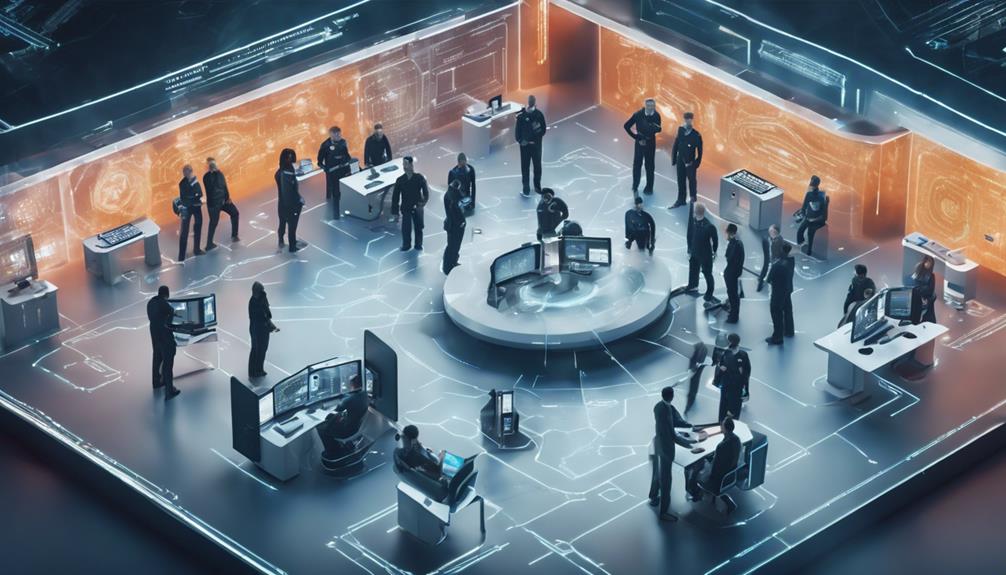AI and ML are a dynamic duo fortifying cybersecurity efforts with advanced threat detection capabilities and streamlined incident responses. Leveraging AI, vast data sets are efficiently scrutinized for anomalies, while ML algorithms pinpoint intricate threat patterns. Automating routine tasks accelerates response times during cyber crises, empowering professionals to concentrate on complex issues. The synergy between AI and ML enhances security data analysis, enabling proactive threat identification and optimized risk management. By embracing these technologies, organizations can anticipate and combat evolving cyber threats more effectively. Explore the profound impact of AI and ML in cybersecurity further for in-depth insights.
Key Takeaways
- AI and ML enhance threat detection with advanced analytics.
- Automation streamlines cybersecurity tasks for faster response times.
- ML models prioritize threats for efficient risk management.
- Proactive identification of anomalies aids in swift incident response.
- Organizations benefit from AI-driven security operations for enhanced protection.
Threat Detection Enhancement
AI greatly enhances threat detection capabilities by efficiently analyzing vast amounts of data for anomalies, thereby strengthening cybersecurity defense mechanisms. Through the utilization of machine learning algorithms, AI can identify patterns within the data that may indicate advanced threats, enabling proactive measures to be taken.
By automating threat detection processes, AI streamlines cybersecurity tasks, allowing professionals to focus on more complex issues. This technology is essential for accurately analyzing patterns and swiftly identifying potential cybersecurity threats that may evade traditional detection methods.
With the assistance of AI, cybersecurity professionals can work more efficiently as basic threat detection tasks are handled autonomously. By leveraging AI's capabilities in analyzing and interpreting large volumes of data, organizations can stay ahead of cyber threats and protect their sensitive information effectively.
The integration of AI in threat detection not only enhances the overall security posture but also provides a proactive approach to cybersecurity defense.
Incident Response Optimization
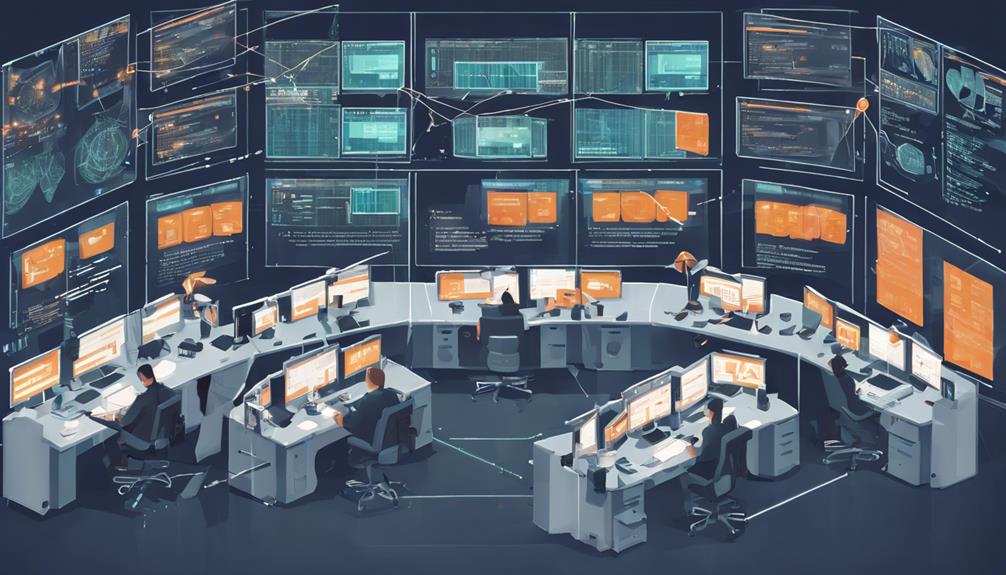
Incident response optimization utilizing AI and ML technologies offers a significant advantage in speeding up response times during cyber incidents.
By automating threat analysis and leveraging machine learning algorithms to detect patterns in attacks, organizations can enhance their overall threat detection capabilities.
This proactive approach not only reduces manual errors but also empowers cybersecurity teams to effectively prioritize and mitigate security threats promptly.
Speeding up Response
Efficient response time optimization in cybersecurity incidents is essential for effective threat mitigation and safeguarding organizational assets. By leveraging AI and ML technologies, incident response processes can be greatly accelerated, leading to quicker threat containment and reduced impact on business operations. AI-driven automation plays an important role in detecting and responding to security incidents in real-time, enabling organizations to stay ahead of evolving threats. ML algorithms enhance incident response by analyzing patterns in security incidents, facilitating the optimization of response strategies based on historical data and trends. Organizations that implement AI for incident response have reported up to 70% faster threat containment rates, showcasing the tangible benefits of incorporating these technologies. Prioritizing alerts and automating manual tasks further streamline incident response workflows, allowing cybersecurity teams to focus their efforts on critical tasks. The table below highlights the key advantages of utilizing AI and ML in speeding up incident response:
| Advantages | |
|---|---|
| Faster Threat Containment | Organizations can respond to threats more swiftly, minimizing potential damages. |
| Real-Time Detection | AI-driven automation enables the instant detection and response to security incidents. |
| Enhanced Response Strategies | ML algorithms analyze patterns in security incidents to optimize response strategies. |
Automating Threat Analysis
Automating threat analysis through advanced technologies greatly enhances the efficiency and effectiveness of incident response optimization in cybersecurity. By leveraging AI and ML, organizations can streamline their response processes, reducing incident response time by 65% and lowering breach rates by 40%. The importance of AI-driven incident response to analyze and prioritize alerts at a speed ten times faster than manual methods is a game-changer in handling security incidents promptly and effectively. Additionally, ML algorithms play a significant role in accurately identifying and classifying security incidents with up to 95% precision, providing invaluable support to cybersecurity teams.
Automating threat analysis not only boosts the speed of incident response but also allows security professionals to focus on more strategic tasks by automating routine analysis processes. This shift in focus enables organizations to proactively address potential threats and vulnerabilities, ultimately strengthening their overall security posture. Embracing automation in threat analysis is a proactive step towards enhancing incident response capabilities and fortifying defenses against evolving cyber threats.
Enhancing Threat Detection
Utilizing AI and ML technologies in cybersecurity greatly enhances the efficiency of threat detection processes by analyzing large datasets to pinpoint anomalies and potential security breaches. Incident response optimization is crucial in combating cyber attacks effectively. By leveraging AI and ML, cybersecurity professionals can streamline tasks, enabling a more focused approach towards complex threats. Algorithms empowered with AI can efficiently identify unusual activities, categorize potential threats based on their complexity, and establish a hierarchy of risks for improved detection and response. This aids in prompt alert dissemination and the smooth operation of cyber risk management tasks.
| AI & ML in Threat Detection | Benefits |
|---|---|
| Efficient anomaly detection | Enhances security |
| Streamlined incident response | Focus on complex threats |
| Cluster potential threats based on complexity | Improved risk detection |
| Hierarchy of threats for better response | Quick alert dissemination |
| Prompt cyber risk management | Efficient operations |
Security Data Analysis Advancements
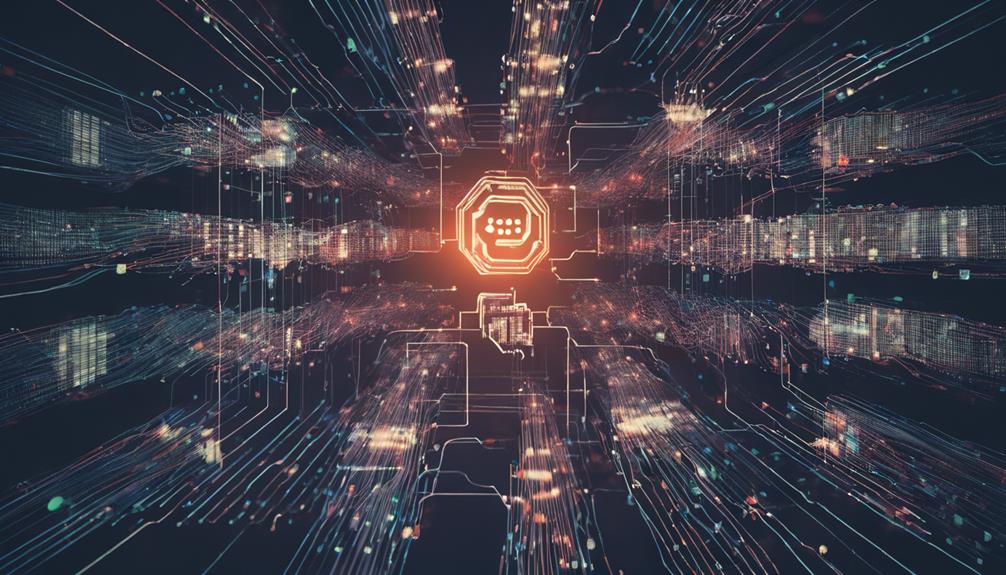
Security data analysis advancements powered by AI and ML have revolutionized threat detection, enabling organizations to proactively identify and mitigate potential risks.
By leveraging historical data and real-time information, these technologies facilitate real-time incident response, reducing the impact of cyber attacks.
Machine learning algorithms play an essential role in clustering and prioritizing threats, allowing for more efficient and effective cyber risk management operations.
Enhanced Threat Detection
How do AI and ML advancements in data analysis enhance threat detection capabilities in cyber security?
AI and ML algorithms play a crucial role in bolstering threat intelligence by enabling the analysis of massive datasets to identify potential risks. These technologies excel at analyzing patterns within security data, empowering organizations to detect anomalies and anticipate threats before they escalate.
Advanced analytics programs driven by AI extract valuable insights from diverse sources, aiding in the proactive threat identification process. Machine learning algorithms are particularly adept at clustering potential threats based on their complexity, facilitating the prioritization of responses for more efficient risk management.
Moreover, AI and ML contribute greatly to building a hierarchy of threats, enabling organizations to develop an in-depth understanding of their security landscape. By leveraging Behavior Analytics and other sophisticated techniques, these technologies enhance threat detection capabilities, empowering cybersecurity teams to stay ahead of malicious actors and safeguard critical assets effectively.
Real-Time Incident Response
Enhancing incident response capabilities in cyber security, AI and ML algorithms perform real-time analysis of security data to swiftly detect and counter cyber threats. By leveraging AI-driven real-time incident response, organizations can greatly reduce the impact of cyber attacks.
Advanced security data analysis tools, powered by ML models, enable the processing of vast amounts of security data in milliseconds. This rapid analysis allows for the prompt identification of patterns and anomalies, facilitating immediate incident response actions. Through security data analysis advancements, companies can proactively defend against evolving cyber threats with enhanced incident response capabilities.
Implementing AI and ML technologies in real-time incident response not only improves the efficiency of detecting security breaches but also accelerates the response time to mitigate potential damages. By staying ahead of cyber threats through swift and accurate incident response, organizations can safeguard their systems and data effectively.
The synergy between AI, ML, and real-time incident response is a formidable asset in the ongoing battle against cyber threats.
Risk Mitigation Strategy Refinement
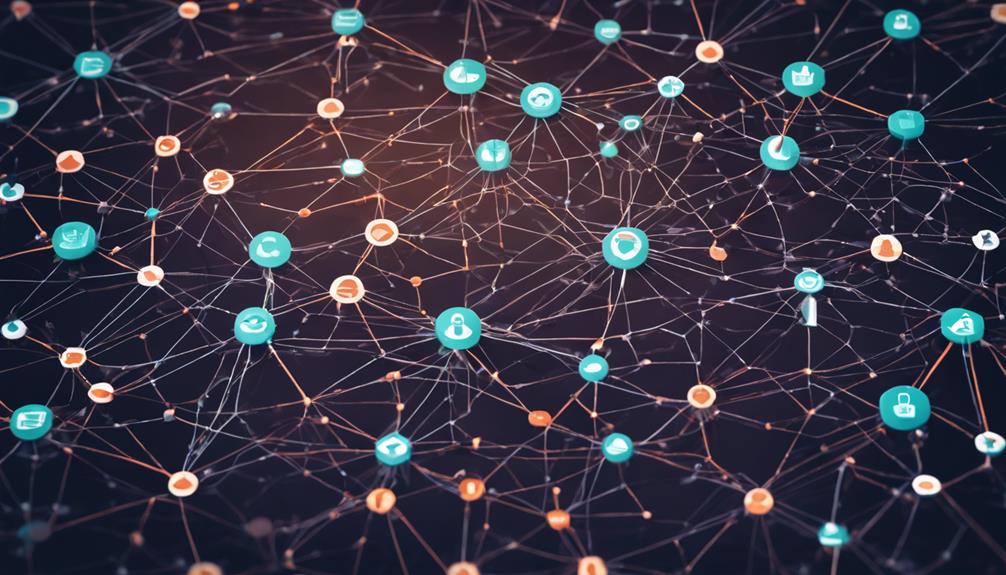
By refining risk mitigation strategies in the field of cybersecurity, organizations can proactively identify vulnerabilities and patterns to enhance their defense mechanisms. Leveraging machine learning (ML) and big data, organizations can analyze historical data to identify threats and patterns that may go unnoticed by traditional security systems.
Understanding user behavior through data analysis enables organizations to detect anomalies and potential security breaches swiftly. This proactive approach allows for real-time alert escalation in response to abnormal situations, minimizing the risk of data loss and leaks.
Moreover, integrating AI-powered systems into risk mitigation strategies enables quick threat detection and response, reducing the time taken to identify potential data leakages. By infusing algorithms into analytical programs and establishing a hierarchy of threats, organizations can better prepare and respond effectively to cyber attacks.
Through continuous refinement and adaptation of risk mitigation strategies, organizations can stay ahead of evolving threats and enhance their overall cybersecurity posture.
Evolving Threat Landscape Adaptation

Adaptation to the ever-evolving threat landscape in cybersecurity requires a proactive and dynamic approach leveraging advanced technologies. Security professionals must harness the power of AI and machine learning to stay ahead of sophisticated threats. By utilizing these tools, organizations can effectively identify and respond to emerging dangers.
Here are key ways AI and ML aid in adapting to the evolving threat landscape:
- Threat Intelligence: AI enables the collection and analysis of large volumes of threat data to provide actionable insights.
- Anomaly Detection: Machine learning algorithms help in recognizing unusual patterns or behaviors that may indicate a security threat.
- Automated Response: AI-driven systems can respond to security incidents in real-time, mitigating risks promptly.
- Continuous Learning: ML models can adapt and improve over time by learning from new data and experiences.
- Scalability: AI technologies can handle large amounts of security data efficiently, ensuring thorough threat detection capabilities.
Upleveling Security Operations
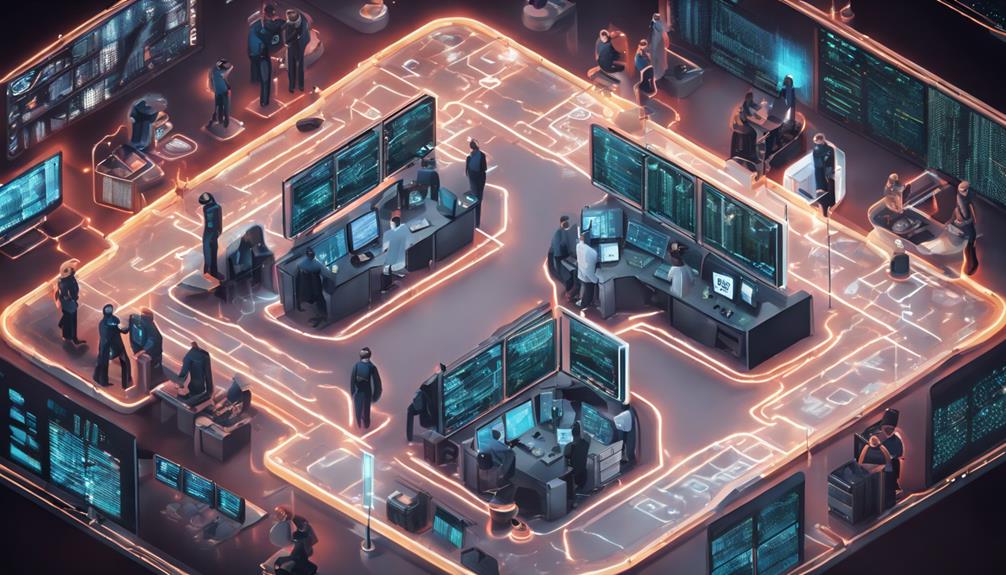
Leveraging AI and ML technologies is pivotal in elevating the efficiency of security operations within organizations. By harnessing the power of AI and ML, security teams can better analyze user behavior, detect and respond to threats more effectively, and enhance the capabilities of existing security tools.
These technologies enable proactive identification of potential risks by sifting through vast amounts of data to pinpoint anomalies that may signal different types of attacks.
AI and ML not only automate routine tasks but also provide valuable insights that aid in decision-making processes. The ability to process and interpret data helps security professionals stay ahead of evolving threats, ultimately fortifying the organization's defense mechanisms.
With approximately half of enterprises already utilizing AI and ML for cybersecurity and the vast majority planning to integrate these tools, the future of security operations looks promising. As the market for AI-based cybersecurity products continues to grow, organizations can expect enhanced protection against a wide array of cyber threats.
Frequently Asked Questions
How Can AI and ML Be Used for Cyber Security?
AI and ML in cyber security bolster threat detection, automate processes, and optimize security operations. By efficiently analyzing data, they identify zero-day exploits, polymorphic malware, and insider threats. Machine learning aids in predicting, preventing, and mitigating cyber-attacks.
Can I Combine AI and Cyber Security?
Combining AI and cyber security is essential for enhancing threat detection and response capabilities in today's digital landscape. By leveraging AI technologies, organizations can improve their cyber defense strategies and stay ahead of evolving cyber threats effectively.
Will AI and ML Play a Role in the Future of Cybersecurity?
In the future of cybersecurity, AI and ML are poised to play a pivotal role by enhancing threat detection capabilities, automating security tasks, and enabling professionals to focus on complex threats. Their adoption is essential for bolstering cyber defenses.
What Is the Power of AI in Cybersecurity?
The power of AI in cybersecurity lies in its ability to enhance threat detection, automate tasks, analyze user behavior for insider threats, and streamline security operations. AI's efficiency and scalability make it an essential tool in combating evolving cyber threats.
Conclusion
Ultimately, the integration of AI and ML technologies in cyber security offers a powerful combination that enhances threat detection, optimizes incident response, advances security data analysis, refines risk mitigation strategies, and adapts to the evolving threat landscape.
By upleveling security operations, organizations can better protect their assets and data from cyber threats. Embracing these technologies is essential in staying ahead of cyber threats and safeguarding sensitive information in an increasingly digital world.





